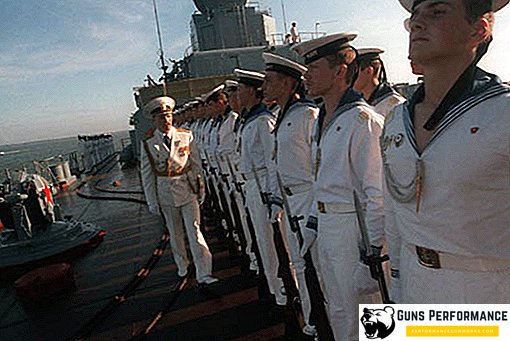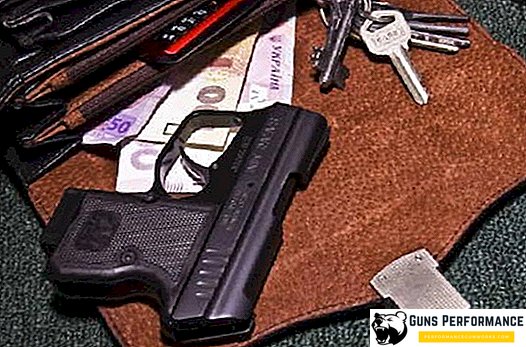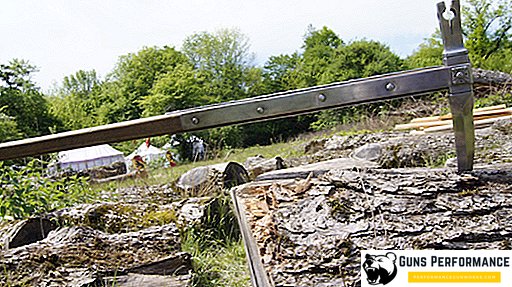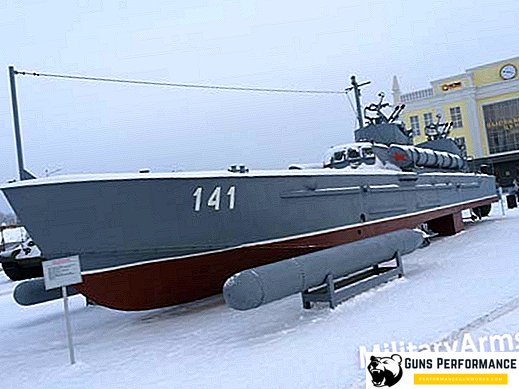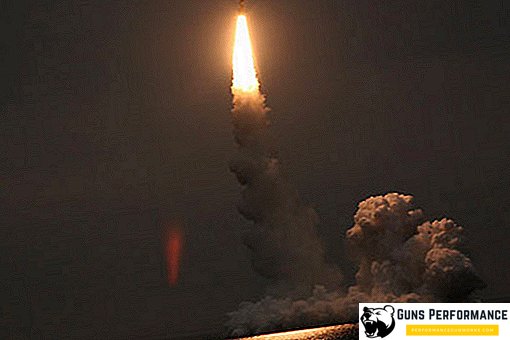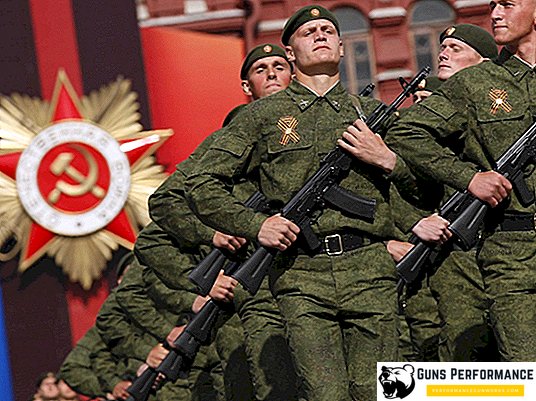Venezuela is currently a presidential type republic. The country gained its independence in the 19th century, but until the 1960s the political situation in the region was extremely unstable. The struggle of state authorities and various drug cartels often made the role of the president of Venezuela purely symbolic, and he had to fulfill someone else’s will in order not to be removed from his post. Because of this, there were frequent coups in the country, the Constitution was changing. According to some experts, the Constitution in Venezuela was published about 27 times, and each time it appeared its own characteristics.
Currently, the presidency of Venezuela is Nicolas Maduro. He was re-elected on May 20, 2018. In the elections, the country's leader received about 67% of the vote. As for his opponents, they protested, claiming that the election results were rigged.
The formation of Venezuela in the colonial period

In 1499, the conquistador from Spain, Alonso de Ojeda, arrived on the territory of modern Venezuela. Although the main task of the conquerors was looting, among the conquistadors came across and educated people. Seeing on the lake Maracaibo several dozen Indian huts, which stood on stilts and were connected by bridges, the Italian Amerigo Vespucci, who arrived with the Spaniards, decided to call this Indian settlement a little Venice or Venezuela.
After some time, on the shores of Lake Maracaibo, a small village of Loro was built, which soon became a city. Initially, only it was called Venezuela, but later the whole country became so called. The entire territory of the country was occupied by Indian tribes who were engaged in the following activities:
- Gathering;
- The hunt;
- Fishing;
- Primitive agriculture.
Aboriginal tribes constantly feuded among themselves, which the Spanish conquistadors took advantage of. Helping stronger tribes, and creating short-term combat alliances, they gradually drove the Indians into the jungle and mountain areas. The main goal of the Spaniards was gold, since the whole of Latin America in the first half of the XVI century was covered by the "gold rush".
Although gold placers were found on the territory of present-day Venezuela, they turned out to be very insignificant, therefore from the middle of the 16th century, the main occupation of European colonialists was clearing land for plantations and growing sugar cane and indigo. On these plantations, Indian slaves labored, who from the former allies quickly became servants of the Spaniards. Cities in Venezuela were laid in the following sequence:
- The first settlement was Loro;
- In 1520, the Cumana settlement was founded;
- In the period from 1528 to 1546, the German colony Klein-Venedig was founded and developed on the territory of Venezuela. This was done in order to pay off part of the debts of the Spanish king Charles I, who owed a huge amount to German bankers from the house of the Belzer;
- In the late 16th and early 17th centuries, the cities of Merida, Caracas, Valencia and other cities were founded.
By the beginning of the XVIII century, the Spaniards, having mastered the northern regions of the country, moved south, exterminating and enslaving the local tribes of Indians, who were forced to go there from the northern regions. Many aborigines died from measles and smallpox, and the survivors went to the deaf jungle.
The country's struggle for independence from Spain
A serious struggle for the independence of Venezuela began in 1806. The main leader of the revolution was Francisco de Miranda. In 1811, he declared Venezuela an independent republic. Naturally, the Spanish authorities did not like this, and Mirinda’s uprising was brutally suppressed. In 1812, the rebel leader was imprisoned, and the new rebel leader was Simon Bolivar.
The struggle for the independence of the country lasted about 10 years, and in 1821 Bolivar was declared the first president of a large state of Colombia, which included the territories of the following modern republics of Latin America:
- Modern Colombia;
- Venezuela;
- Panama;
- Ecuador.
We can say that it was a real empire, and Bolivar himself in Latin America in those years was no less respected than Napoleon in Europe. The fate of the great Colombia after the death of the revolution leader did not work out - in 1830 it broke up into several independent states, among which was Venezuela.
The very first leader of Venezuela was General José Antonio Paez. An interesting fact is that the first president of the country was a descendant of the semi-wild shepherds-läneros, at least one of his parents was definitely an Indian. First, the future general fought on the side of the Spaniards, later he joined the army of Bolivar. The very first leader of Venezuela was a real warrior who ruled with an iron fist. After the end of his powers, he handed over power to the newly elected president, José Maria Vargas.
Vargas could not stay in power, and was quickly overthrown from his post by supporters of the enemy in the presidential election. Upon learning of this, Paes returned from his ancestral estate, quickly recruited troops, who respected him as a strong leader, and restored the constitutional order in the country. It is noteworthy that having defeated the rebels, the famous general gave the power to the popularly elected president.
In 1838, Paez won the next election, and again assumed the presidency by honest means, although he could have remained in office for two consecutive terms. Being a man of honor, the general did not redo the Constitution for themselves. While in power, Paez tried to strengthen the economy of Venezuela, which was destroyed as a result of the revolutions and crisis of 1838.
In 1846, José Antonio Paez led government forces, suppressing insurrections that broke out under various presidents. In 1848 there was a case that caused the military general to revolt. The next president, José Tadeo Monagas, decided to dissolve the Congress, as he dreamed of becoming a dictator. Paez could not bear it, and raised a rebellion that ended not in his favor. The general had to flee the country, which again plunged into the abyss of unrest.
In 1858, a revolution occurred, as a result of which the liberal government was overthrown. Under Julian Castro, the famous general was restored to all his titles and titles, and he was able to return to his homeland. Soon the next revolution began, as a result of which Antonio Paez became the supreme dictator in Venezuela. After the end of the revolution, which lasted until 1863, the general and the president voluntarily relinquished power and left the country, forever.
In 1870, liberal Antonio Guzman Blanco came to power in the country. His reign lasted until 1887. Blanco was elected to the presidency three times with short breaks. The power at this time in Venezuela passed to other presidents who could not competently manage the state. During his reign, Antonio Guzman Blanco was able to do the following for the country:
- Brought Venezuela out of the economic crisis;
- Established trade and political relations with European powers;
- Opened many museums, academies and academic institutions throughout the country;
- He built roads and highways;
- Opened schools and colleges, even in Indian villages;
- He built the first railway in the country and did much more.
Historians unanimously claim that it was Blanco who was the best president since Venezuela’s independence. After leaving office in 1887, the president left the country with a strong economy, after which she again plunged into the period of revolts and revolutions, which lasted until 1899.
President Cipriano Castro and other leaders of Venezuela until 2018

In 1899 a man came to power far from politics. His path is a clear example of the fact that any rich person with ambitions could become the president of Venezuela in those years. The rich planter Cipriano Castro, enlisting the support of his rich friend Juan Vicente Gomez, quickly recruited recruits, equipping them with his own money. He descended from the Andes and attacked the residence of President Andrade. Having seized power, Castro was proclaimed the new leader of Venezuela on October 23, 1899. The economic situation in the republic was in extremely poor condition, and Castro concluded new loan agreements, trying to save the situation. In 1902, the country refused to pay its debts to European lenders. Then all the ports of Venezuela were blocked by ships of the following European states:
- Italy;
- Germany;
- Great Britain.
All this happened with the tacit consent of the United States of America. As a result of these measures, all foreign trade in the country has stopped. Venezuela had to pay its creditors 30% of the customs duties of Puerto Cabello and La Guaira.
The vice-president of the country until 1908 was Juan Gomez, who helped to seize the power of Castro in 1899. In 1908, he took advantage of the long absence of the president (he went to Europe for treatment), and seized power in the country. The new president became a real dictator, and ruled the country with interruptions until 1935. During the election of other presidents, Juan Gomez preferred to govern the country as Supreme Commander. The first years of Gomez’s presidency were fairly democratic:
- He issued a decree by which all political prisoners were released;
- The presidential term of office was reduced to 4 years;
- Restored press freedom.
With each new election of Juan Gomez, he took away more and more powers. After the inauguration, the president immediately changed the Constitution. Gradually, all power in the country was concentrated in the hands of Gomez, who placed his relatives and friends in key positions. By the 1930s, the presidential dictatorship was finally formed:
- All rebellions were brutally suppressed;
- The opposition was in prison;
- The oil industry, which was developed precisely under Gomez, was placed in the hands of foreign companies.
Despite all the drawbacks of dictatorial rule, thanks to oil production and competent management of the financial flow of petrodollars, the country was able to fully pay off its debts. Venezuela, under Juan Gomez, is the second largest oil producer in the world.
After Juan Gomez, the key people in the presidency were the following people:
- From 1935 to 1941, the rules of Eleasar Contreras. This military man came to power from a position of strength. At the same time, first of all he released all political prisoners from prisons, showing that he was not a supporter of dictatorship. Under Contreras, tremendous advances were made in health care. A relevant ministry and several research centers dedicated to the study of diseases have been created;
- From 1941 to 1945, the country was ruled by Medina Angarita. Despite the fact that he was a brigadier general, the rules were quite liberal. I tried to maneuver between Democrats and the military leadership. Despite this, the military elite overthrew the president in 1945;
- From 1945 to 1947, the country ruled by Betancourt;
- In 1947-1948, Gallegos became president;
- From 1949 to 1952, the country was ruled by a military junta;
- Perez Jimenez ruled the country from 1952 to 1958. The colonel came to power as a result of a coup d'état;
- In 1959, a revolution occurred in the country, as a result of which Romulo Betancourt came to power. He was president until 1964;
- From 1964 to 1969, the head of state was Raoul Leoni;
- Until 1974, the country was ruled by Raphael Caldera;
- From 1974 to 1979, power in the country belonged to Carlos Perez, who was reelected in 1989. After the second term, Peres ruled until 1993. This year the president was deprived of his post;
- From 1993 to 1998, Rafael Caldera was president. Did not participate in the elections of 1998, due to old age;
- In 1998, the president was Hugo Chavez, who played a significant role in the development of the country's economy. At the same time he was a real dictator, concentrating all power in his hands;
- Since 2013, the country is ruled by Nicolas Manduro. May 20, 2018 he was elected president for another term. Most of the countries of the West, Latin America and the United States refused to recognize the legitimacy of the elections. Decrees were issued, imposing a number of economic sanctions on Venezuela.
It is currently unknown whether the next revolution awaits the country, or whether Nicholas Manduro will continue to rule the country.
Features of the form of government in Venezuela

Currently, the power in the country is elected in accordance with the 1999 Constitution, which was adopted after a series of reforms in the political sphere. Features of power in Venezuela are as follows:
- The president is elected for a term of 6 years with the right to be re-elected. In 2009, a referendum was held in which voters voted that the president could be elected an unlimited number of times;
- The status of the president and his duties are limited by the parliament, but in fact, the power of Nicolas Manduro is dictatorial;
- The executive branch according to the 1999 Constitution received a number of expanded powers. This is especially true of the economic sphere;
- The central government has the right to intervene in all matters relating to governance in the states of the republic. This is done in order to reduce the risk of the emergence of serious centers of resistance to the existing power;
- Entrepreneurs are significantly limited in their rights. In this regard, few states risk investing their money in enterprise development in Venezuela. At any time you can lose your business;
- The federal congress was abolished;
- Appeared National Assembly.
In addition, a procedure has been established for amending the Constitution. According to the law, an amendment may be made:
- On the initiative of 15% of voters;
- On the initiative of 39% of deputies;
- At the initiative of the president, who is a government.
It should be noted that amendments to the country's Constitution should not contradict its general spirit. Only a citizen of Venezuela who was born in the country can become president. The same condition applies to the election of a vice president and chairman of parliament. An interesting feature of the country's Constitution is the prescribed duty for the people to remove any power that is not democratic.
Duties of the President of Venezuela

The elected head of the country has a number of rights and obligations, which are spelled out in the relevant documents:
- The main task of the president is the function of the guarantor of the Constitution. It must maintain constitutional order in the country and protect the rights of citizens both in Venezuela and abroad;
- All presidential orders are legislative acts;
- The head of state must lead the government, appoint and dismiss its members;
- To develop the country's foreign policy course;
- Convene extraordinary sessions of the National Assembly, dissolve and convene it;
- The President is the Supreme Commander of the Venezuelan Armed Forces;
- The President may impose a state of emergency or martial law in the country;
- Declare war or make peace;
- Appoint a vice president and head of the National Assembly.
In addition, the head of state has a number of obligations that relate to the governance of the country.
Residence of the President of Venezuela

The official residence of the head of state is the Miraflores Palace. In Russian, it translates as "wonderful flower". This is the place where the president’s reception is located. The residence is located in the capital of Venezuela, the city of Caracas. The architect and author of the presidential palace is a famous Italian engineer of the late XIX century, Giuseppe Orsi. At that time, such buildings were built with particular luxury. To verify this, just look at the exterior and interior decoration of the residence. Almost anyone can get inside, since some of the rooms are open for tourists to visit on certain historical dates.
Palace "Wonderful Flower" was founded in 1884, as the residence of President Joaquin Crespo. This political figure then for the first time took the place of the state leader. Subsequently, he was elected 2 more times. Construction began Giuseppe Orsi, but he failed to finish it. По причине тяжёлого экономического положения, строительство дворца растянулось на 20 лет. Завершал его архитектор Хуан Салас. В оформлении дворца принимала участия целая команда скульпторов, декораторов, конструкторов, архитекторов, резчиков и художников со всей Венесуэлы и ряда других стран.
В 1911 году здание было выкуплено правительством у генерала Галависа, который являлся его владельцем. Для военного это было большой удачей, так как обычно собственность подобного рода просто отбирали. В 1959 году в здании резиденции была создана специальная президентская библиотека. В настоящее время там находится 15 000 000 страниц документов, связанных с историей президентского правления в стране.


